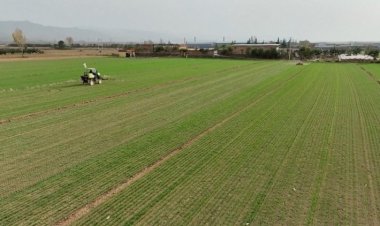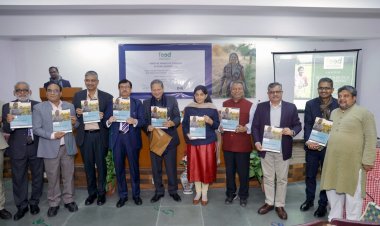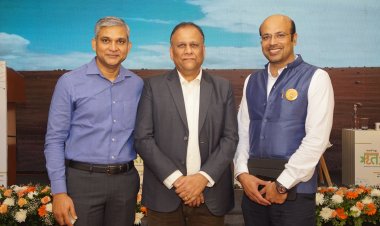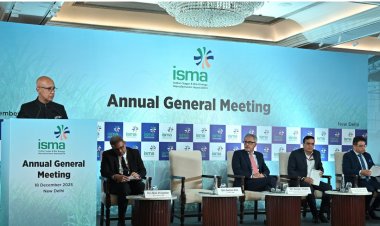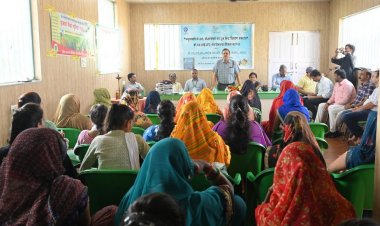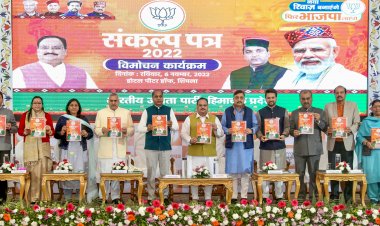India faces worst brunt of air pollution; lives of Delhiites shortened by 12 yrs: Report
India faces the worst brunt of air pollution in the world, while Delhi’s annual average PM2.5 level in 2021 was found to be 126.5 µg/m3 - a whopping 25 times more than the World Health Organisation (WHO) guidelines.
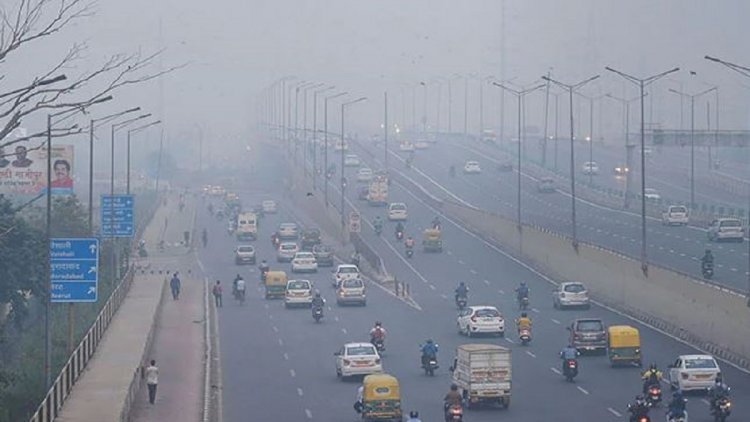
India faces the worst brunt of air pollution in the world, while Delhi’s annual average PM2.5 level in 2021 was found to be 126.5 µg/m3 - a whopping 25 times more than the World Health Organisation (WHO) guidelines.
Air pollution shortens the lives of the residents of Delhi by 11.9 years, according to the Air Quality Life Index (AQLI) report for 2023 by the University of Chicago’s Energy Policy Institute. Northern plains (comprising Bihar, Chandigarh, Delhi, Haryana, Punjab, Uttar Pradesh, and West Bengal) are the most polluted region of the country, says the report. AQLI measures the impact of particulate pollution on life expectancy, and the report released on Tuesday draws on particulate matter data from 2021 to determine its impact on life expectancy.
Delhi’s annual average PM2.5 level in 2021 was found to be 126.5 µg/m3, which is more than 25 times the World Health Organisation (WHO) guideline of 5 µg/m3, according to the report. In 2020, this figure was found to be a little lower at 107 µg/m3. On account of the number of people that high particulate matter levels affect in India, the country faces the greatest health burden from air pollution among all the countries in the world. In South Asia, as in India, PM2.5 levels have seen an uptick, said the report.
“In South Asia, particulate pollution has increased 9.7 percent from 2013 to 2021…In India, PM2.5 levels rose 9.5 percent; in Pakistan 8.8 percent; and in Bangladesh, levels rose by 12.4 percent over this same time interval,” the report noted. According to PM2.5 data for 2021 derived from satellites, pollution in India has increased from 56.2 µg/m3 in 2020 to 58.7 µg/m3 in 2021. This is more than 10 times the WHO guideline of 5 µg/m3.
The report said particulate matter pollution is also the biggest threat to human health in India in terms of lowering life expectancy, beating cardiovascular diseases and child and maternal malnutrition. While particulate pollution takes 5.3 years off the life of the average Indian, cardiovascular diseases reduce life expectancy by about 4.5 years, and child and maternal malnutrition reduces life expectancy by 1.8 years. “The average Indian resident is set to lose 5.3 years of life expectancy if the WHO guideline is not met,” the report stated. The average resident in the northern plains could lose around 8 eight years of life expectancy if these pollution levels persist.
What could happen if PM2.5 levels are reduced?
If the PM2.5 level in Delhi is reduced to meet the WHO guideline of 5 µg/m³ as an annual average, a resident in Delhi could gain 11.9 years in life expectancy. If the PM2.5 concentration is reduced from what is the 2021 level to the national standard of 40 µg/m³, which is well below the WHO guideline, a Delhi resident could gain 8.5 years in life expectancy, the report noted. Similarly, in India, reducing the PM2.5 level from the 2021 level to the WHO guideline could mean an increase of 5.3 years in life expectancy, while the gain would be 1.8 years if the country’s annual average PM2.5 level was lowered to meet its own standard of 40 µg/m³.
“In 2022, the Government of India revamped its NCAP (National Clean Air Programme) goal, aiming to achieve a 40 percent reduction in particulate pollution levels by 2026 in 131 non-attainment cities. Achieving and sustaining such a reduction for the 131 non-attainment cities would increase India’s national average life expectancy by 7.9 months, and by 4.4 years for residents of Delhi–the most polluted non-attainment city, underscoring the massive potential benefits," the report noted. The AQLI, a pollution index, is based on peer-reviewed research that quantifies the relationship between long-term exposure to particulate pollution and life expectancy.
Air pollution now a major risk to life expectancy in South Asia. The region accounts for more than half of the total life years lost globally to pollution, the report says. The region, which includes the world's most polluted countries of Bangladesh, India, Nepal, and Pakistan, accounts for more than half of the total life years lost globally to pollution. Rapid industrialisation and population growth have contributed to declining air quality in South Asia, where particulate pollution levels are currently more than 50% higher than at the start of the century and now overshadow dangers posed by larger health threats.
People in Bangladesh, the world's most polluted country, stands to lose 6.8 years of life on average per person, compared to 3.6 months in the United States, according to the study, which uses satellite data to calculate the impact of an increase in airborne fine particles on life expectancy.
India is responsible for about 59% of the world's increase in pollution since 2013, the report said, as hazardous air threatens to shorten lives further in some of the country's more polluted regions. “Reducing global levels of lung-damaging airborne particles, known as PM 2.5, to levels recommended by the World Health Organization (WHO) could raise average life expectancy by 2.3 years, or a combined 17.8 billion life years,” the report said.
“An average resident of Pakistan would gain 3.9 years from meeting the WHO guidelines of limiting average annual PM 2.5 concentration to 5 micrograms per cubic metre, while someone in Nepal would live 4.6 years longer if the guideline was met,” according to the report. China, meanwhile, has worked to reduce pollution by 42.3% between 2013 and 2021, the report said, highlighting the need for governments to generate accessible air quality data to help bridge global inequalities in accessing tools to combat pollution.



 Join the RuralVoice whatsapp group
Join the RuralVoice whatsapp group


















